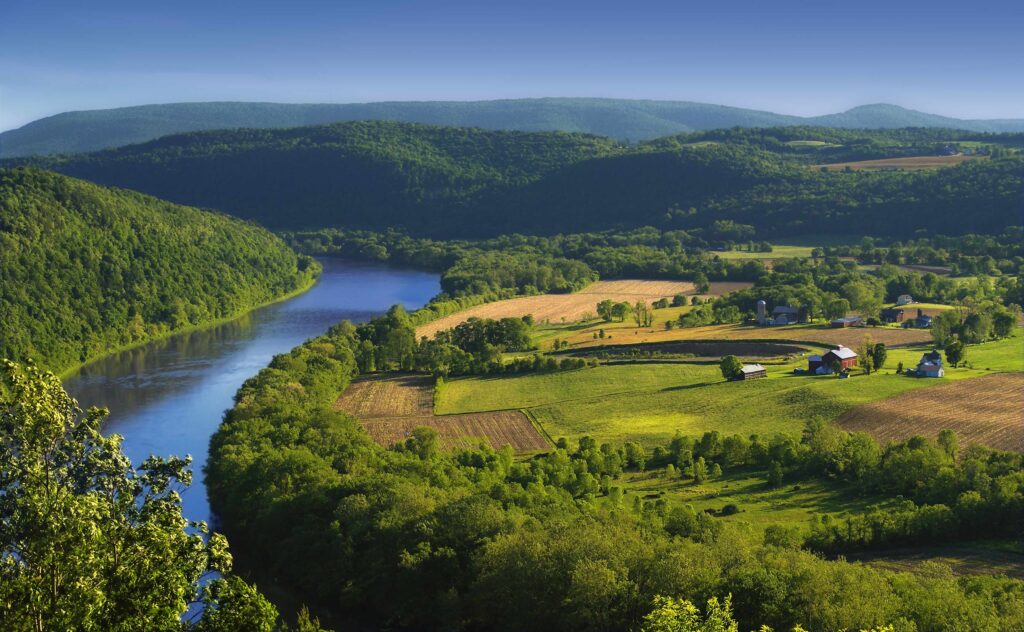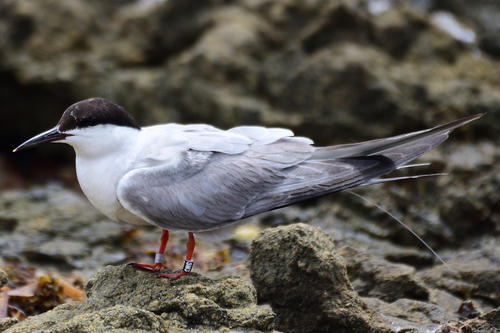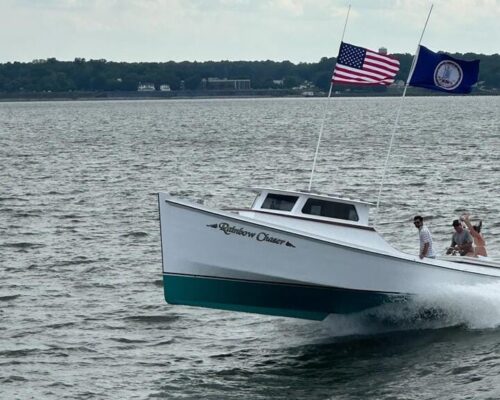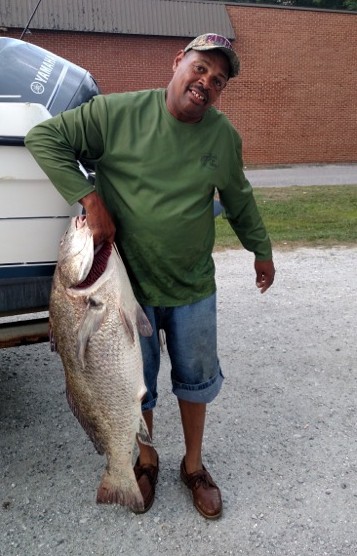For the last 10 years, the states that touch the Chesapeake Bay have been committed to achieving a list of pollution reduction goals by the year 2025. It has become increasingly clear the watershed states will not meet their 31 commitments by the 2025 deadline.
As the Chesapeake Bay Executive Council met Tuesday, with less than a month until the deadline, everyone was wondering what comes next in the fight to clean up the Chesapeake Bay. Maryland Governor Wes Moore, Virginia Governor Glenn Youngkin, Pennsylvania Governor Josh Shapiro, and representatives from the governors of Delaware, Washington, D.C., West Virginia and New York, all met to chart a future with leaders from EPA’s Chesapeake Bay Program and the Chesapeake Bay Commission.
Moore, who was unanimously re-elected Tuesday as chair of the Executive Council, announced that the regional federal-state partnership will revise the existing Chesapeake Bay Watershed Agreement over the next year. They signed a directive forming an Agricultural Advisory Committee to develop strategies that balance conservation and agricultural operations.
Moore honed in specifically on shallow water habitat as a focus for the revised Watershed Agreement, meaning waters along the edges of the Bay and its tributaries that are less than 6 feet. He said that improving shallow water areas will allow for the wins needed to make broader improvements.
Other goals for the revised Watershed Agreement include streamlining and simplifying the existing partnership. A big focus is on “nonpoint sources” of pollution, any pollution that doesn’t come from a single known source like industrial or sewage treatment plants. Instead, a nonpoint source comes from runoff that makes its way into the Bay, like fertilizers, sediment from construction sites, bacteria from livestock and pet waste, or chemicals from urban environments. EPA’s Acting Deputy Administrator, Jane Nishida, said that point sources, the direct-source pollution, was the easy part. Now the partnership must keep working on the nonpoint sources.
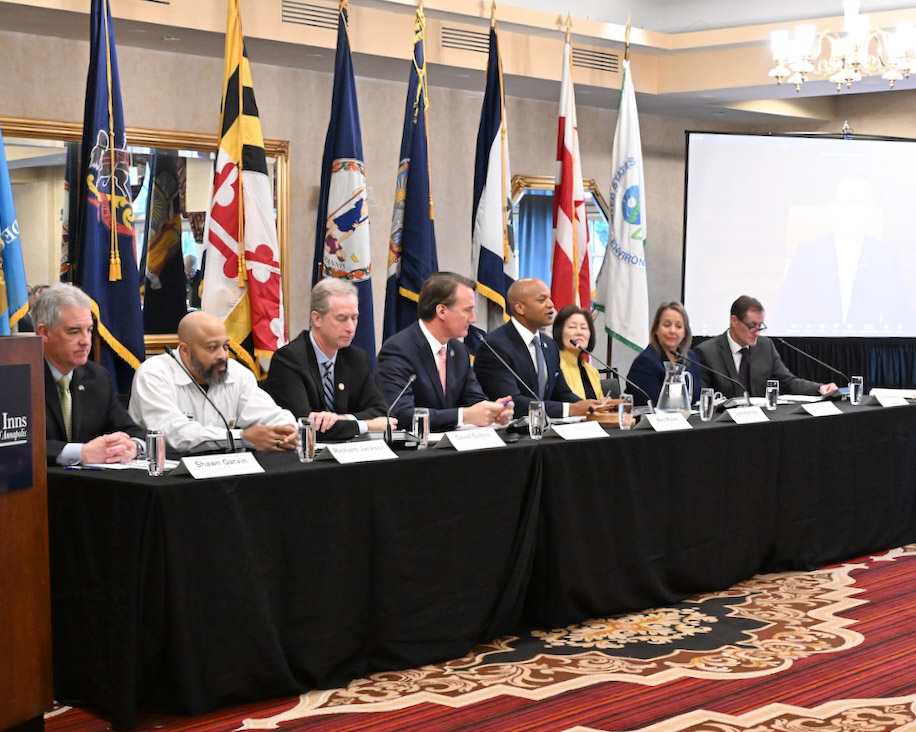
Youngkin emphasized the need to move forward with “great practicality and urgency”, professing the need for “measures, not models!”. He wants to continue moving towards voluntary, incentive-based measures and he wants to set achievable goals. When pressed about the 2014 Watershed Agreement goals, Youngkin said the Total Maximum Daily Load targets were unrealistic. He feels the funding was inadequate and the plan wasn’t clear enough. “The goals don’t need to change, we just need more time.”
For Pennsylvania’s part, Shapiro pledged the state’s full commitment to the Chesapeake Bay Watershed Agreement. “For a long time, Pennsylvania was on the sidelines and now Pennsylvania is in the game,” he declared. Even though the Susquehanna River is the state’s largest tributary and supplies half of the Chesapeake Bay’s total water volume, there has been a disconnect for some of Pennsylvania’s residents in taking ownership of their impact on the Bay. Shapiro says the state is moving in the right direction, pointing to the large amount of Bay buffers being planted and collaborations between water restoration experts and farmers, towards a common goal of improving streams.
Like its fellow commonwealth of Virginia, Pennsylvania’s portion of the Bay watershed includes a large agricultural presence. The new Agricultural Advisory Committee will be made up of farmers, urban farmers, and other agricultural interests, giving them a voice so that the states can make improvements to water health while allowing farms to stay viable.
All the members of the Executive Council emphasized how important the partnership aspect of this effort is. Moore pointed out that there were times in the past “when people didn’t see eye to eye,” continuing, “Well, those days are over.” He says the watershed leaders all “understand the assignment,” and when a new presidency begins in January, they will look forward to working with the new administration on their collective goal of restoring the Bay.
Finally, Moore announced he will “personally introduce legislation” in Maryland’s next legislative session that he calls the Bay Legacy bill. It would protect public lands, make farming reachable for people from all kinds of backgrounds, bolster the Department of Natural Resources’ water quality monitoring methods, and make new opportunities for oyster farms.
Chesapeake Bay Foundation President and CEO Hilary Harp Falk looks forward to an updated Watershed Agreement one year from now that follows the latest science, with progress milestones for accountability.
In a statement, she writes, “We have momentum. Water quality is improving. Crabs, grasses, and oysters are starting to recover. That recovery is fragile and facing new challenges like climate change. But as we saw in the Executive Council’s demonstration of leadership, partnership and commitment, the state of the Bay Partnership is stronger than ever.”

